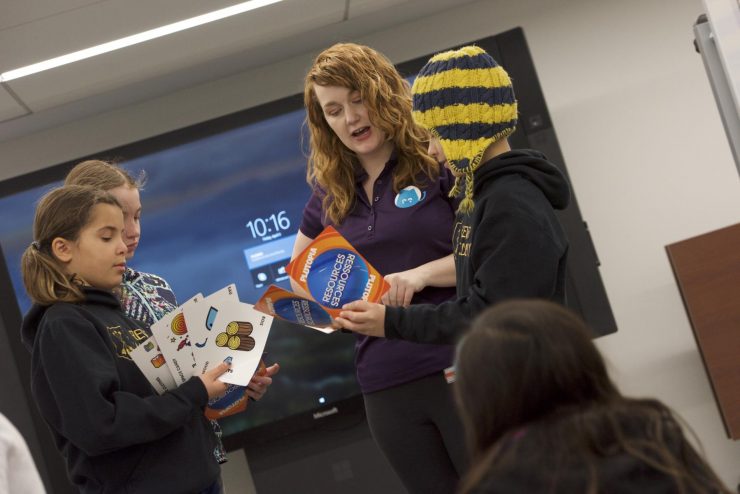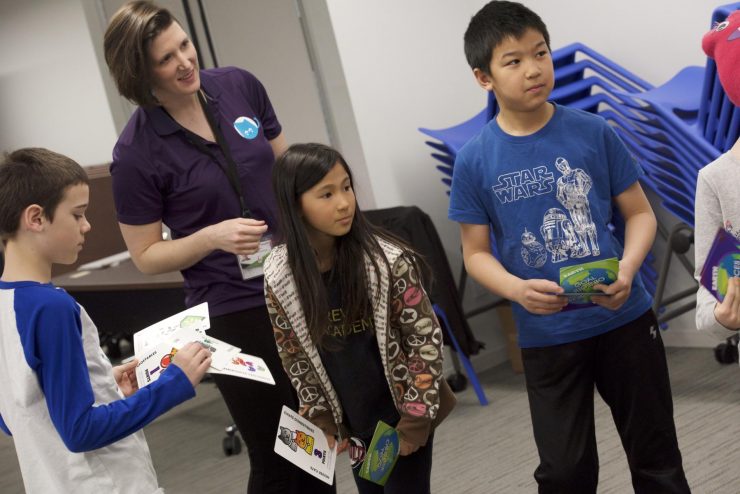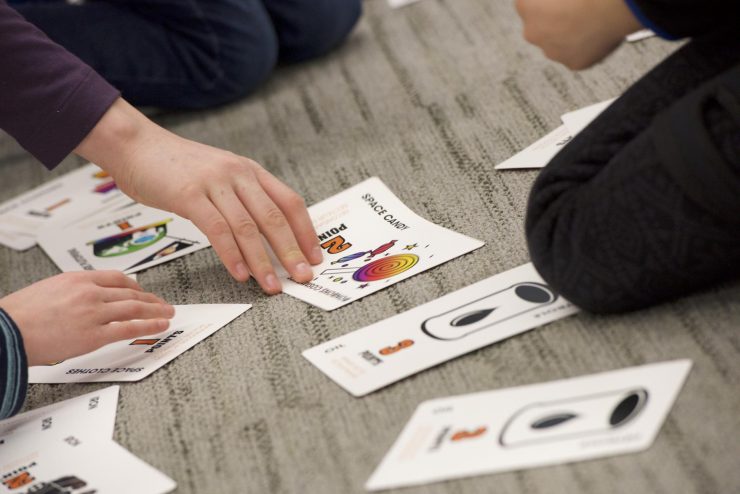
In this onsite program, travel to Planet Plutopia on a trade mission and discover that trading goods without a common currency poses problems.
In this cooperative learning game, students will trade primary and secondary resources and see the effect that factors such as the environment can have on trade shortages.
Grades
Grades 4 to 6
Big idea
Trade is difficult without a common currency. Supply and demand in trade are influenced by outside factors like environmental conditions and labour shortages.
Learning objectives
Students will:
- compare the challenges of trade with and without a common currency
- define and describe primary and secondary resources
- discuss the effects of outside elements (such as the environment) on trade
Curriculum links
Ontario
- Grade 4 math
- Financial literacy
- Grade 4 social studies
- People and Environments: Political and Physical Regions
- Grade 5 math
- Financial literacy
- Grade 5 Social Studies
- People and environments: the role of government and responsible citizenship
- Grade 6 math
- Financial literacy
- Grade 6 Social Studies
- People and environments: Canada’s interactions with the global community
Quebec
- Cycle Two—Elementary 4: Culture and Citizenship in Quebec
- Consumption
- Cycle Two—Elementary 4: Social Sciences
- Competency 1: To understand the organization of a society in its territory
- Cycle Three—Elementary 5: Culture and Citizenship in Quebec
- Ecological transition
- Cycle Three—Elementary 5 and 6: Social Sciences
- Competency 1: To understand the organization of a society in its territory
Duration
This onsite program requires at least 90 minutes.
Availability
This onsite program is offered Thursdays and Fridays. The last booking is at 15:00.
Cost
All school programs are offered free of charge.
Class size
10 to 50 students per program.
Book your visit
or call 613‑782‑8914 to book a visit. Please include the following information in your request:
- date and time of arrival
- number of students and teachers
- program or tour of your choice
- preferred official language
- any accessibility or special needs
We will confirm your booking within five to seven business days.
Before your visit
Try out the following activities:
- Find historical examples of currencies through the Bank of Canada Museum’s online collection.
- Explore the resources you’ll be trading in advance with our trading posters.
Changes and cancellations
To ensure the best possible experience for all visitors, we kindly ask groups that make reservations to adhere to the following guidelines:
- Cancellations and changes:
Groups that need to change or cancel reservations for programs must tell us at least 48 hours in advance. Failure to do so may impact your ability to book our programs in the future, including participation in our bursary program. - Late arrivals:
Groups that arrive 15 minutes or more after their scheduled start time may forfeit their reservation. If you anticipate being late, please contact us as soon as possible at 613-782-8914 or . - Minimum group size requirement:
We may cancel your reservation if, upon arrival, your group does not meet the minimum size requirement for the reserved program.



